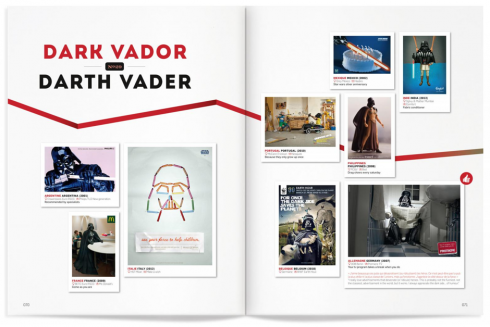Climate change is happening faster than initially predicted, and its impacts are already upon us in the form of more extreme weather events, desertification, ocean acidification, melting glaciers and incrementally rising sea levels.
The scientists who construct the computer models that analyze climate data believe that even if we stop dumping greenhouse gases into the atmosphere, CO2 levels are already so high that we are locked into a significant increase in global temperatures. Disruptive climate change is a certainty even if we make the economic shift away from fossil fuels.
Incipient climate change is already starting to express itself in the realm of politics.
Climate change arrives in a world primed for crisis. The current and impending dislocations of climate change intersect with the already-existing crises of poverty and violence. I call this collision of political, economic and environmental disasters the catastrophic convergence. By catastrophic convergence, I do not merely mean that several disasters happen simultaneously, one atop another. Rather, I argue that problems compound and amplify each other, one expressing itself through another.
Societies, like people, deal with new challenges in ways that are conditioned by the traumas of their past. Thus, damaged societies, like damaged people, often respond to new crises in ways that are irrational, shortsighted, and self-destructive. In the case of climate change, the prior traumas that set the stage for bad adaptation, the destructive social response, are Cold War–era militarism and the economic pathologies of neoliberal capitalism. Over the last 40 years, both of these forces have distorted the state’s relationship to society – removing and undermining the state’s collectivist, regulatory and redistributive functions, while overdeveloping its repressive and military capacities. This, I argue, inhibits society’s ability to avoid violent dislocations as climate change kicks in.
Planning for apocalypse
A slew of government reports have discussed the social and military problems posed by climate change. In 2008. Congress mandated that the upcoming 2010 Quadrennial Defense Review – the policy document laying out the guiding principles of US military strategy and doctrine – consider the national-security impacts of climate change. The first of these investigations to make news, a 2004 Pentagon-commissioned study called “An Abrupt Climate Change Scenario and Its Implications for United States National Security,” was authored by Peter Schwartz, a CIA consultant and former head of planning at Royal Dutch/Shell, and Doug Randall of the California-based Global Business Network.The report was made at the behest of octogenarian military theorist cum imperial soothsayer Andrew Marshall. Known to his followers as Yoda, after the wrinkled, dwarflike puppet of Star Wars fame, Marshall got his start at the RAND Corporation in 1949 as a specialist on nuclear Armageddon and its alleged survivability. He moved from RAND to the Pentagon during Richard Nixon’s presidency and served every president since. (It is interesting to note the presence of atomic-era Cold Warrior physicists among both the climate-change denialists and the military adaptationists. In his book How to Cool the Planet, Jeff Goodell remarks on the same set’s infatuation with the high-tech solutions promised by geoengineering, in particular Lawrence Livermore Laboratory’s Lowell Wood, a tie-dye wearing disciple of Edward Teller.)
Schwartz and Randall’s report correctly treats global warming as a potentially nonlinear process. And they forecast a new Dark Ages:
Nations without the resources to do so may build virtual fortresses around their countries, preserving resources for themselves … As famine, disease, and weather-related disasters strike due to the abrupt climate change, many countries’ needs will exceed their carrying capacity. This will create a sense of desperation, which is likely to lead to offensive aggression in order to reclaim balance … Europe will be struggling internally, large numbers of refugees washing up on its shores and Asia in serious crisis over food and water. Disruption and conflict will be endemic features of life. Once again, warfare would define human life.
In 2007, there came more reports on climate and security. One, from the Pentagon-connected think tank CNA Corporation, convened an advisory board of high-ranking former military officers to examine the issues – among them General Gordon Sullivan, former chief of staff, US Army; Admiral Donald Pilling, former vice chief of naval operations; Admiral Joseph Prueher, former commander in chief of the US Pacific Command; and General Anthony Zinni, retired US Marine Corps and former commander in chief of US Central Command. That report envisioned permanent counterinsurgency on a global scale. Here is one salient excerpt:
Climate change acts as a threat multiplier for instability … Unlike most conventional security threats that involve a single entity acting in specific ways at different points in time, climate change has the potential to result in multiple chronic conditions, occurring globally within the same time frame. Economic and environmental conditions in these already fragile areas will further erode as food production declines, diseases increase, clean water becomes increasingly scarce, and populations migrate in search of resources. Weakened and failing governments, with an already thin margin for survival, foster the conditions for internal conflict, extremism, and movement toward increased authoritarianism and radical ideologies. The US may be drawn more frequently into these situations to help to provide relief, rescue, and logistics, or to stabilize conditions before conflicts arise.
Another section notes:
When a government can no longer deliver services to its people, ensure domestic order, and protect the nation’s borders from invasion, conditions are ripe for turmoil, extremism and terrorism to fill the vacuum … the greatest concern will be movement of asylum seekers and refugees who due to ecological devastation become settlers.
In closing the report notes, “Abrupt climate changes could make future adaptation extremely difficult, even for the most developed countries.”
Another report from 2007, the most scientifically literate of the lot, titled The Age of Consequences: The Foreign Policy National Security Implications of Global Climate Change, was produced by the Center for Strategic and International Studies and the Center for a New American Security. Its prominent authors included Kurt Campbell, former deputy assistant secretary of defense; Leon Fuerth, former national security advisor to Vice President Al Gore; John Podesta, former chief of staff for President Bill Clinton; and James Woolsey, former director of the Central Intelligence Agency.
Age of Consequences laid out three plausible scenarios for climate change, each pertaining to different global average-temperature changes. The authors relied on the Fourth Assessment Report of the Intergovernmental Panel on Climate Change but noted, “Recent observations indicate that projections from climate models have been too conservative; the effects of climate change are unfolding faster and more dramatically than expected.” The report conceives of future problems not in terms of interstate resource wars but as state collapse caused by “disease, uncontrolled migration, and crop failure, that … overwhelm the traditional instruments of national security (the military in particular) and other elements of state power and authority.” Green ex-spook James Woolsey authored the report’s final section laying out the worst-case scenario. He writes:
In a world that sees two meter sea level rise, with continued flooding ahead, it will take extraordinary effort for the United States, or indeed any country, to look beyond its own salvation. All of the ways in which human beings have dealt with natural disasters in the past … could come together in one conflagration: rage at government’s inability to deal with the abrupt and unpredictable crises; religious fervor, perhaps even a dramatic rise in millennial end-of-days cults; hostility and violence toward migrants and minority groups, at a time of demographic change and increased global migration; and intra- and interstate conflict over resources, particularly food and fresh water. Altruism and generosity would likely be blunted.
the west versus the rest
Other developed states have conducted similar studies, most of them classified. The Australian Defence Force (ADF) produced a report on climate conflict in 2007, a summary of which was leaked two years later: “Environmental stress, caused by both climate change and a range of other factors, will act as a threat multiplier in fragile states around the world, increasing the chances of state failure. This is likely to increase demands for the ADF to be deployed on additional stabilization, post-conflict reconstruction and disaster relief operations in the future.”
The European powers are also planning for the security threats of a world transformed by climate change. The European Council released a climate-security report in 2008, noting that “a temperature rise of up to 2°C above preindustrial levels will be difficult to avoid … Investment in mitigation to avoid such scenarios, as well as ways to adapt to the unavoidable should go hand in hand with addressing the international security threats created by climate change; both should be viewed as part of preventive security policy.”
In familiar language the report noted, “climate change threatens to overburden states and regions which are already fragile and conflict prone,” which leads to “political and security risks that directly affect European interests.” It also notes the likelihood of conflict over resources due to reduction of arable land and water shortages; economic damage to coastal cities and critical infrastructure, particularly Third World megacities; environmentally induced migration; religious and political radicalization; and tension over energy supply.
Western military planners, if not political leaders, recognize the dangers in the convergence of political disorder and climate change. Instead of worrying about conventional wars over food and water, they see an emerging geography of climatologically driven civil war, refugee flows, pogroms and social breakdown. In response, they envision a project of open-ended counterinsurgency on a global scale.
the eco-fascist threat
The watchwords of the climate discussion are mitigation and adaptation – that is, we must mitigate the causes of climate change while adapting to its effects.
Adaptation means preparing to live with the effects of climatic changes, some of which are already underway and some of which are inevitable – in the pipeline. Adaptation is both a technical and a political challenge.
Technical adaptation means transforming our relationship to nature as nature transforms: learning to live with the damage we have wrought by building seawalls around vulnerable coastal cities, giving land back to mangroves and everglades so they can act to break tidal surges during giant storms, opening wildlife migration corridors so species can move north as the climate warms, and developing sustainable forms of agriculture that can function on an industrial scale even as weather patterns gyrate wildly.
Political adaptation, on the other hand, means transforming humanity’s relationship to itself, transforming social relations among people. Successful political adaptation to climate change will mean developing new ways of containing, avoiding, and deescalating the violence that climate change fuels. That will require economic redistribution and development. It will also require a new diplomacy of peace building.
However, another type of political adaptation is already underway, one that might be called the politics of the armed lifeboat: responding to climate change by arming, excluding, forgetting, repressing, policing, and killing. One can imagine a green authoritarianism emerging in rich countries, while the climate crisis pushes the Third World into chaos. Already, as climate change fuels violence in the form of crime, repression, civil unrest, war and even state collapse in the Global South, the North is responding with a new authoritarianism. The Pentagon and its European allies are actively planning a militarized adaptation, which emphasizes the long-term, open-ended containment of failed or failing states – counterinsurgency forever.
This sort of “climate fascism,” a politics based on exclusion, segregation, and repression, is horrific and bound to fail. There must be another path. The struggling states of the Global South cannot collapse without eventually taking wealthy economies down with them. If climate change is allowed to destroy whole economies and nations, no amount of walls, guns, barbed wire, armed aerial drones, or permanently deployed mercenaries will be able to save one half of the planet from the other.
Christian Parenti is a visiting scholar at the Center for Place Culture and Politics at the CUNY Graduate Center and was just appointed professor at the School for International Training, Graduate Institute. This essay is drawn from his new book Tropic of Chaos: Climate Change and the New Geography of Violence.

















































